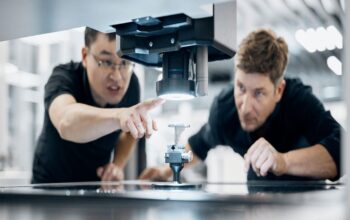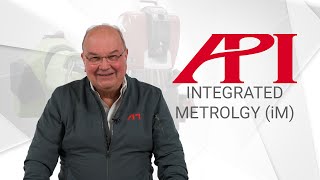Automotive paint protection films (PPF) not only enhance the aesthetic appeal of vehicles but also offer essential protection against UV rays, heat, and minor abrasions.
PPF manufacturers are looking for a faster, more accurate, and less labor-intensive means of producing dimensionally accurate protective films.
Automotive Film Manufacturer
Skyfol specializes in automotive and architectural window films, including paint protection films. Their longstanding history in the industry has allowed them to develop partnerships with top manufacturers worldwide, ensuring that their products meet stringent quality standards.
As the demand for precision and efficiency in film production increases, Skyfol has sought to innovate its manufacturing processes, particularly in the digitization of vehicle surfaces for custom film applications.

Measurement of a Car
One of the cars to be measured in this case is 2024 Skoda Superb, a vehicle known for its sleek design and high-quality finish. For Skyfol to produce pre-cut, dimensionally accurate protective films, the entire body of the car needs to be digitally captured.
This requires meticulous attention to detail, especially around edges and folds. Any inaccuracies could lead to improper fitting and compromised protection.
Measurement Challenges
The primary challenge in this project was ensuring accurate measurements despite the inherent complexities of the vehicle’s surface.
The paintwork and varnish of the cars basically contains unevenness, which was detected by the laser scanner and magnified in a few cases due to the lens effect. Exposition times had to be determined for each vehicle type and colour.
Scanning the vehicle outdoors presented additional hurdles. Fluctuating weather conditions, such as unexpected rain and gusty winds, posed risks of interference during the scanning process.
The project required a flexible approach, allowing for adjustments based on the changing environment.

Limits of Previous Measurement Methods
Skyfol had previously tested several scanning systems to find a solution that met their high standards. Traditional methods often fell short, particularly in the following areas:
Inability to Scan Shiny Surfaces: Many scanners struggled with reflective surfaces, leading to incomplete data capture.
Long Turnaround Times: Previous methods often required excessive time to achieve acceptable accuracy, impacting production schedules.
Lack of Compatibility with Design Software: Files generated from these systems did not always align with the needs of the film design team, complicating the integration process.
Scantech’s 3D Solutions and Benefits
Skyfol turned to Scantech’s TrackScan optical 3D system to overcome these challenges. The TrackScan optical 3D scanning system is engineered for precision and efficiency, featuring advanced industrial cameras and robust processors for edge computing.
This cutting-edge technology is specifically designed to measure large-scale parts from impressive distances, boasting a long tracking range and a large measurement volume.
Flow of Events
Setup and Calibration: The Scantech system was set up and calibrated according to environmental conditions, optimizing parameters for the best results.
Test Scans: Initial test scans were conducted to finalize scanning parameters before the main operation.
Scanning Execution: Each element of the vehicle was carefully scanned to ensure data integrity. Larger components, like the roof and hood, were scanned efficiently, while smaller parts, such as the front wheel arches, were captured with ease. The entire process took about half a day.

The advantages of TrackScan 3D Scanner included:
Adaptive Exposure Control: The ability to adjust exposure time on-the-fly proved invaluable given the variable light conditions during scanning. This feature ensured that all details of the vehicle were captured, regardless of the outdoor environment.
Dynamic Tracking: Dynamic tracking of TackScan allowed the team to maintain measurement accuracy despite wind gusts and the presence of onlookers at the scanning site. This adaptability minimized disruptions and reduced the likelihood of needing to restart the scanning process.

User-Friendly Feedback: The sound and light feedback mechanisms provided clear indications of scanning status, helping operators maintain the correct scanning distance even in bustling outdoor conditions.

Excellent for Reflective Surfaces: Enhanced by an advanced algorithm, TrackScan excels at capturing 3D data from both reflective and dark surfaces, making it a versatile tool for precise digital mapping.
Fast and Precise: Powered by cutting-edge hardware and strong edge computing, TrackScan can capture up to 2.6 million measurements/s and a accuracy of up to 0.025 mm.
With its capability for large-volume measurements, it efficiently collects precise 3D data of components, streamlining the entire measurement process. It provides 3D data that is fully prepared for manufacturing.

Conclusion
Skyfol’s partnership with Scantech represents a significant leap forward in the production of precision automotive paint protection films. By using advanced 3D scanning technology, Skyfol can now deliver high-quality, pre-cut protective films tailored to the unique contours of vehicles.
This collaboration not only enhances efficiency and accuracy in the manufacturing process but also reinforces Skyfol’s commitment to quality and innovation in the film manufacturing industry.









